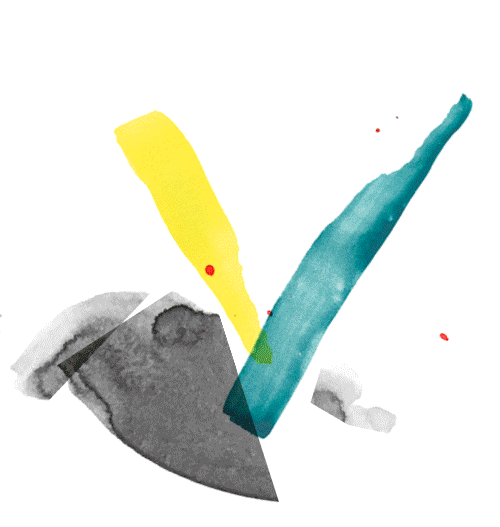

Sign up for our newsletters. You can change the settings or unsubscribe at any time.
Thank you for your subscription. We have sent you an e-mail with a confirmation link.


exp. 1
exp. 2
exp. 3

Małgorzata Mirga-Tas
Venue: KW Institute for Contemporary Art
Małgorzata Mirga-Tas
Born 1978 in Zakopane, PL – lives and works in Czarna Góra, PL
The sculptural installation Lost Memory (2018) is an echo and means of healing: In 2016 anonymous vandals destroyed a public monument, a massive wooden carving by artist Małgorzata Mirga-Tas. The work had been inaugurated in 2011 as part of the 12th International Roma Caravan Memorial. Its site marked the place where in 1942, twenty-nine Roma were murdered in the forest of Borzęcin Dolny by German soldiers and Blue Police in occupied Poland. The destruction of the sculpture was willful: it was pulled from its base and smashed to pieces with an axe. Reconstructed and recarved, the monument was restored, but the artist kept the broken pieces of the original work, using them to cast the wax and porcelain components that constitute Lost Memory. Tactile and sensual, these figural elements suggest the vitality and vulnerability of flesh while also drawing on the apotropaic significance that wax carries in Romani culture. Although the 2016 attack was an attempt to negate history and intimidate contemporary Roma, Lost Memory tends to the wounds of the sculpture and community without erasing the violence; its cast components ensure that the work can be remade, even if parts are (again) destroyed. Mirga-Tas reminds us that memory is embodied and that both trauma and resilience are inherited.
Also on view are parts of the artist’s series of patchwork screens Romani Kali Daj [Roma Madonna, 2019/20], which portrays women important to the artist. Incorporating the fabric of clothing worn by her relatives and community members, the screens show figures, such as Mirga-Tas’ grandmother and mother who, having respectively survived World War II and the totalitarian Communist rule in Poland, transcended traditional gender roles in terms of their position in the family. Surrounded by objects dear to them, the women are shown in moments of reflection, alone or with family—witnesses to history who link the past with the present.
Pia Chakraverti-Wuerthwein
Glossary of Common Knowledge
L’Internationale Online
Glossary
Fragments of the Artist’s Diary, Berlin 11.2019–1.2020
Virginia de Medeiros
Diary
Teatro da Vertigem
Monograph
IV: How Fear Can Dismantle a Body. Vis-a-Vis with two of four curators of the 11th Berlin Biennale
María Berríos, Lisette Lagnado
Conversation
COVID-19 VIDEOS
Carlos Motta
Video
O Bailado do Deus Morto
Flávio de Carvalho
Play
By using this website you agree to the use of cookies in accordance with our data privacy policy.

Małgorzata Mirga-Tas
Venue: KW Institute for Contemporary Art
Małgorzata Mirga-Tas
Born 1978 in Zakopane, PL – lives and works in Czarna Góra, PL
The sculptural installation Lost Memory (2018) is an echo and means of healing: In 2016 anonymous vandals destroyed a public monument, a massive wooden carving by artist Małgorzata Mirga-Tas. The work had been inaugurated in 2011 as part of the 12th International Roma Caravan Memorial. Its site marked the place where in 1942, twenty-nine Roma were murdered in the forest of Borzęcin Dolny by German soldiers and Blue Police in occupied Poland. The destruction of the sculpture was willful: it was pulled from its base and smashed to pieces with an axe. Reconstructed and recarved, the monument was restored, but the artist kept the broken pieces of the original work, using them to cast the wax and porcelain components that constitute Lost Memory. Tactile and sensual, these figural elements suggest the vitality and vulnerability of flesh while also drawing on the apotropaic significance that wax carries in Romani culture. Although the 2016 attack was an attempt to negate history and intimidate contemporary Roma, Lost Memory tends to the wounds of the sculpture and community without erasing the violence; its cast components ensure that the work can be remade, even if parts are (again) destroyed. Mirga-Tas reminds us that memory is embodied and that both trauma and resilience are inherited.
Also on view are parts of the artist’s series of patchwork screens Romani Kali Daj [Roma Madonna, 2019/20], which portrays women important to the artist. Incorporating the fabric of clothing worn by her relatives and community members, the screens show figures, such as Mirga-Tas’ grandmother and mother who, having respectively survived World War II and the totalitarian Communist rule in Poland, transcended traditional gender roles in terms of their position in the family. Surrounded by objects dear to them, the women are shown in moments of reflection, alone or with family—witnesses to history who link the past with the present.
Pia Chakraverti-Wuerthwein
Weaving Solidarity
Renata Cervetto and Duygu Örs
Q&A
El primer nueva corónica y buen gobierno
Felipe Guamán Poma de Ayala
Chronicle
Fragments of the Artist’s Diary, Berlin 11.2019–1.2020
Virginia de Medeiros
Diary
Grupo Experimental de Cine en acción
Gabriel Peluffo
Drawing
Hatred Among Us
Lisette Lagnado
Essay
Expresiones de la locura: el arte de los enfermos mentales
Hans Prinzhorn
Monograph
By using this website you agree to the use of cookies in accordance with our data privacy policy.

Małgorzata Mirga-Tas
Venue: KW Institute for Contemporary Art
Małgorzata Mirga-Tas
Born 1978 in Zakopane, PL – lives and works in Czarna Góra, PL
The sculptural installation Lost Memory (2018) is an echo and means of healing: In 2016 anonymous vandals destroyed a public monument, a massive wooden carving by artist Małgorzata Mirga-Tas. The work had been inaugurated in 2011 as part of the 12th International Roma Caravan Memorial. Its site marked the place where in 1942, twenty-nine Roma were murdered in the forest of Borzęcin Dolny by German soldiers and Blue Police in occupied Poland. The destruction of the sculpture was willful: it was pulled from its base and smashed to pieces with an axe. Reconstructed and recarved, the monument was restored, but the artist kept the broken pieces of the original work, using them to cast the wax and porcelain components that constitute Lost Memory. Tactile and sensual, these figural elements suggest the vitality and vulnerability of flesh while also drawing on the apotropaic significance that wax carries in Romani culture. Although the 2016 attack was an attempt to negate history and intimidate contemporary Roma, Lost Memory tends to the wounds of the sculpture and community without erasing the violence; its cast components ensure that the work can be remade, even if parts are (again) destroyed. Mirga-Tas reminds us that memory is embodied and that both trauma and resilience are inherited.
Also on view are parts of the artist’s series of patchwork screens Romani Kali Daj [Roma Madonna, 2019/20], which portrays women important to the artist. Incorporating the fabric of clothing worn by her relatives and community members, the screens show figures, such as Mirga-Tas’ grandmother and mother who, having respectively survived World War II and the totalitarian Communist rule in Poland, transcended traditional gender roles in terms of their position in the family. Surrounded by objects dear to them, the women are shown in moments of reflection, alone or with family—witnesses to history who link the past with the present.
Pia Chakraverti-Wuerthwein
COVID-19 VIDEOS
Carlos Motta
Video
IV: How Fear Can Dismantle a Body. Vis-a-Vis with two of four curators of the 11th Berlin Biennale
María Berríos, Lisette Lagnado
Conversation
Freiheit für Chile!
Anonymous
Photo album
Queer Ancient Ways: A Decolonial Exploration
Zairong Xiang
Monograph
Género y colonialidad en busca de claves de lectura y de un vocabulario estratégico descolonial
Rita Segato
Essay
Flávio de Carvalho: Fazenda Capuava
Archive of Lisette Lagnado
Photographs
By using this website you agree to the use of cookies in accordance with our data privacy policy.

Małgorzata Mirga-Tas
Venue: KW Institute for Contemporary Art
Małgorzata Mirga-Tas
Born 1978 in Zakopane, PL – lives and works in Czarna Góra, PL
The sculptural installation Lost Memory (2018) is an echo and means of healing: In 2016 anonymous vandals destroyed a public monument, a massive wooden carving by artist Małgorzata Mirga-Tas. The work had been inaugurated in 2011 as part of the 12th International Roma Caravan Memorial. Its site marked the place where in 1942, twenty-nine Roma were murdered in the forest of Borzęcin Dolny by German soldiers and Blue Police in occupied Poland. The destruction of the sculpture was willful: it was pulled from its base and smashed to pieces with an axe. Reconstructed and recarved, the monument was restored, but the artist kept the broken pieces of the original work, using them to cast the wax and porcelain components that constitute Lost Memory. Tactile and sensual, these figural elements suggest the vitality and vulnerability of flesh while also drawing on the apotropaic significance that wax carries in Romani culture. Although the 2016 attack was an attempt to negate history and intimidate contemporary Roma, Lost Memory tends to the wounds of the sculpture and community without erasing the violence; its cast components ensure that the work can be remade, even if parts are (again) destroyed. Mirga-Tas reminds us that memory is embodied and that both trauma and resilience are inherited.
Also on view are parts of the artist’s series of patchwork screens Romani Kali Daj [Roma Madonna, 2019/20], which portrays women important to the artist. Incorporating the fabric of clothing worn by her relatives and community members, the screens show figures, such as Mirga-Tas’ grandmother and mother who, having respectively survived World War II and the totalitarian Communist rule in Poland, transcended traditional gender roles in terms of their position in the family. Surrounded by objects dear to them, the women are shown in moments of reflection, alone or with family—witnesses to history who link the past with the present.
Pia Chakraverti-Wuerthwein
Teatro da Vertigem
Monograph
Glossary of Common Knowledge
L’Internationale Online
Glossary
Being in Crisis together – Einander in Krisen begegnen
Feminist Health Care Research Group (Inga Zimprich/Julia Bonn)
Online workshop
Expresiones de la locura: el arte de los enfermos mentales
Hans Prinzhorn
Monograph
O Bailado do Deus Morto
Flávio de Carvalho
Play
Grupo Experimental de Cine en acción
Gabriel Peluffo
Drawing
By using this website you agree to the use of cookies in accordance with our data privacy policy.
By using this website you agree to the use of cookies in accordance with our data privacy policy.




